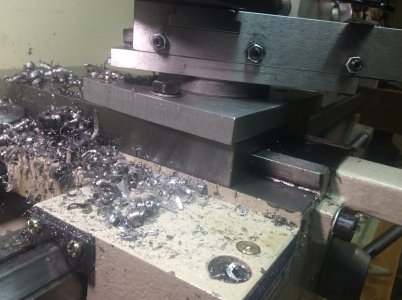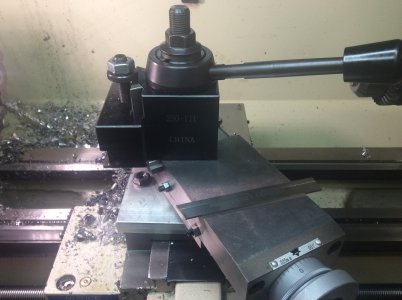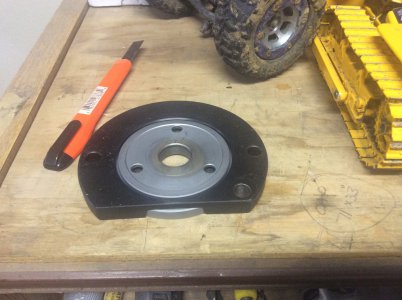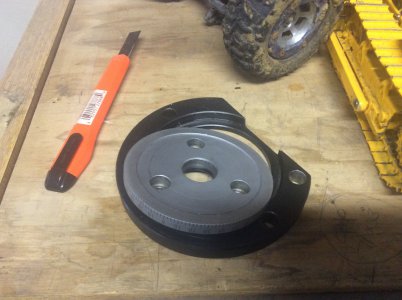coming from someone with, I think, the smallest most flexible lathe on this site (well, until this weekend) here's what I've found.
Parting sucks. You're jabbing an enormously wide cutting edge into the work perpendicular to the direction the lathe is strongest in.
Things that make it better
- a less enormously wide cutting edge. going from 2.5 to 1.2mm wide made an enormous difference in chatter, but also limited the depth of parting.
- side rake, back rake and front rake and front to back clearance. My grooving tools (bit much to call them parting tools) are ground with a sniff of side rake, so that the sides of the tool doesn't touch the work. They're also ground with a sniff of relief from front to back (ie. looking down at the top of the tool it appears slightly tapered) for the same reason. Front rake is as little as possible, 5deg at most (less than on the ends of HSS blanks). Back rake is fairly steep and ground to form a chip roller. This makes the tip "slice" rather than push, plus it helps roll the chips and push them out of the cut.
- heavy feed. Feed is as hard as you can, you should be getting constant cutting and chips. If it chatters, push harder!
- if that doesn't help, sometimes you can take a small cut, retract the tool, move it over and cut to the same depth. That way you get more clearance and half the cuts will be on half the cutting edge, so they'll be smoother.
That said, I can't part with my current lathe as the whole compound/ carriage/ headstock/ spindle flexes enough that the work rides up onto the blade when the diameter gets too small.




